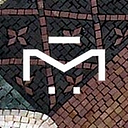The revival and evolution of modern mosaic art
After a slow but gradual decline through the middle ages, mosaic art experienced a revival throughout the 19th century. A thriving tile industry led to a renewed interest in the usage of mosaic tiling patterns in both smaller abbeys and major religious buildings. Detailed religious scenes, interlocking patterns of ceramic tiles, as well as pseudo mosaic and opus sectile, can be seen throughout the chapels and landmark monuments all around the world, like the Sacre-Coeur in Paris and the Westminster Cathedral.
The revival of the Byzantine style of mosaic making was also fueled by the large concentration of wealth that the Victorian era brought with it. Accumulation of treasure and the financial prosperity contributed to the overall increase in domestic and public building and designing projects. Mass production of tiles ultimately renewed interest in the making of decorative floors, which also reflected in the Gothic revival in both architecture and design. Another considerable influence was Antonio Salviati, who is often credited with reviving the Venetian glass industry. He was one of the first manufacturers who saw the huge business opportunity in matching the ancient Venetian skill of mosaic making with the increased Victorian demand for glass mosaics.
Mosaic art was also embraced by the Art Noveau movement. One of the most famous results of this is the Park Gueli in Barcelona created by Antoni Gaudi and Josep Maria Jujol in the first two decades of the 20th century. Ceramic mosaics of park Gueli were produced with a technique known as trencadis, which includes covering surfaces of buildings with purpose-made and waste tiles. Aside from this, Gaudi and Jujol also incorporated broken crockery and a variety of other found objects into their creations, which led to some revolutionary ideas in architecture and formal art in general. Found objects started to be used as mosaic materials in a range of inventive ways. One of the most notable examples of the time is Victorian shell grottoes, as well as “putty pots”, where pieces of china, buttons, toy figures, and other found items adhere to the base with linseed putty. This particular type of collage of found and personal objects connected to everyday life is also known as “memoryware”.
One of the most influential sites was also La Maison Picassiette in Chartres, northern France. It was created by Raymonde Isidore between 1938 and 1964 and it is often mentioned as a true monument of idiosyncratic creativity. Isidore covered his entire house and garden with a huge array of intricate and colorful mosaics of broken crockery. He was nicknamed “Piccassiette” which is French for “scrounger” and he is considered to be the founder of the very popular style of mosaic called “pique assette”.
All of these novelties in terms of techniques and styles led to a pretty healthy and progressive state of mosaic art in modern times or the early 21st century. The field is rich with new and inventive approaches and ideas when it comes to materials, applications, and methods. Some of the leading figures of contemporary mosaic art are Emma Biggs (UK), Lorenzo de Rosso (Italy), Pamela Mauseth (US), Sonia King (US), Vasilisa Janojkic (Serbia), Marcelo de Melo (Brazil), and Saimir Strati (Albania). Organizations such as The Society of American Mosaic Artists, the British Association for Modern Mosaic, and many others were created to promote and further popularize mosaic art.
